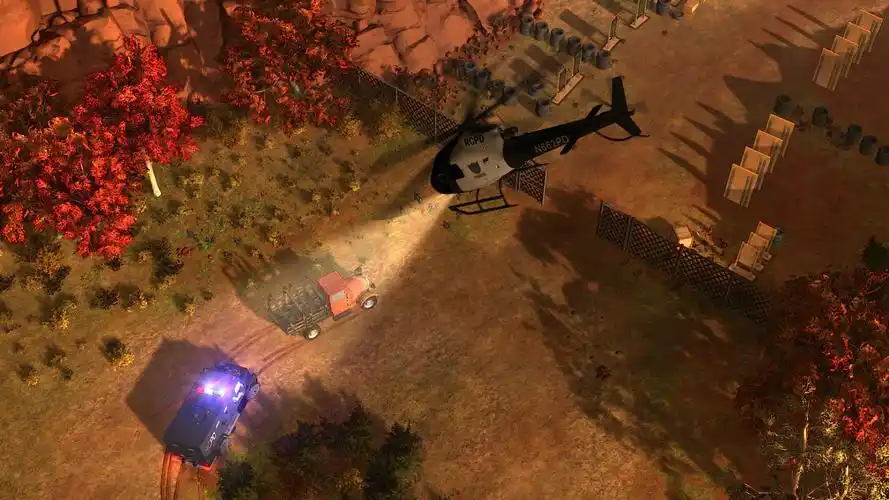Title: Ascending the Neon Horizon: Inside the 'Gas Station Sign Installer Simulator VR' Place Missions Update
The virtual reality (VR) landscape is perpetually evolving, pushing beyond the realms of fantasy shooters and rhythm games into the surprisingly captivating world of hyper-niche simulators. Among these, the quietly brilliant Gas Station Sign Installer Simulator VR carved out a unique space, offering players the oddly meditative and perilous task of assembling and maintaining towering neon beacons. Now, with its monumental 'Place Missions' update, the game has transformed from a compelling job simulator into a profound narrative of urban creation and community impact, redefining what a "simulator" can be.
Beyond Maintenance: The Philosophy of "Place"
Prior to the update, the core gameplay loop was deeply satisfying in its own right. Players, armed with virtual tools, would ascend dizzying heights to replace burnt-out letters, rewire ancient circuitry, and ensure the structural integrity of these steel giants. It was a game of precision, patience, and overcoming acrophobia. The Place Missions update, however, introduces a revolutionary new layer: context.
The update is built on the foundational idea that a gas station sign is not merely a functional object advertising fuel prices; it is a landmark. It’s the first thing a weary traveler sees on a dark, endless highway. It’s the beacon that guides a local home after a long shift. It’s a piece of the community's visual identity. The Place Missions are a series of new contracts that task the player not with repair, but with original installation—building a sign from the ground up in entirely new locations.
Deconstructing a Place Mission: A Journey in Four Acts
A typical Place Mission is an epic undertaking, broken into distinct narrative and gameplay phases that dramatically expand the game's scope.
1. The Survey and Blueprint Phase: The mission begins not on a lift, but at a ground-level meeting with a client. Using a new VR tablet interface, players review architectural blueprints and site surveys. They must assess the terrain, wind patterns, and local regulations—a new game mechanic where incorrect placement can lead to fines or, catastrophically, a collapsed sign later. This phase establishes the "why" behind the job. One mission might involve installing a classic neon sign for a retro-themed diner on Route 66, its owner passionately describing his vision for a nostalgic pitstop. Another might be a pragmatic, corporate job for a hyper-modern fuel station on a newly built interstate, all cold efficiency and LED arrays.

2. The Foundation and Structural Assembly Phase: This is where the simulator truly flexes its physics-driven muscles. Players must first prepare the foundation: mixing and pouring concrete (a surprisingly tactile VR experience), anchoring the massive central pole, and ensuring everything is perfectly level using new laser-guided tools. Assembling the steel trusses and cross-members is a giant, dangerous Lego set. The VR implementation shines here, as the weight and clang of virtual steel feel palpable. The satisfying click of a bolt secured after minutes of careful alignment is a reward in itself.
3. The Wiring and Illumination Phase: With the skeleton of the sign erected, the artistry begins. This phase leans into the game’s strengths, requiring players to meticulously run hundreds of feet of wiring through conduits, connect transformers, and affix the individual letters or panels. The update introduces a vastly expanded inventory of lighting systems: from fragile, warm-glow vintage neon tubes that require expert glass-blowing technique (via precise motion controls) to install, to robust, energy-efficient modern LEDs. The choice often ties back to the client's vision from the first phase, adding role-playing depth.
4. The Testing and Revelation Moment: The climax of every Place Mission is the "First Light" ceremony. After a final safety check, the player throws the main switch. This is a moment of immense tension and potential payoff. If every connection is sound and every component secure, the sign erupts in light, fulfilling its purpose for the first time. The game’s audio design excels here, with the deep hum of transformers and the iconic buzz of neon tubes creating a symphony of success. The camera often pulls back dynamically, showing the new sign in its full contextual glory—lighting up a previously dark stretch of road, becoming a new star on the skyline. The client’s reaction, from joyous cheers to a simple nod of approval, provides a human connection that was previously absent.
The Ripple Effect: How Place Missions Change the Game World
The genius of this update is its persistent impact. A completed Place Mission doesn’t just disappear from the contract list. That sign becomes a permanent fixture in the game’s open-world map. You’ll later receive service calls for it—a burnt-out bulb, storm damage—making the world feel alive and your role within it truly consequential. You’re not just a faceless repair technician; you are the architect of ambiance, the electrician of atmosphere.
Furthermore, the update introduces a "Community Board" where townsfolk post requests. These are smaller, more personal Place Missions: installing a vintage sign for a family-owned drive-in theater or crafting a custom neon artwork for a local bar. These missions deepen the connection to the game's world, transforming it from a series of job sites into a living, breathing community that values your specific, unique skill set.
Conclusion: A New Standard for VR Simulation
The Place Missions update for Gas Station Sign Installer Simulator VR is a masterclass in game design evolution. It takes a solid, novel concept and elevates it to something truly special. By shifting the focus from pure maintenance to creation, it injects narrative weight, emotional stakes, and a profound sense of ownership into the experience. It proves that even the most mundane professions, when viewed through the right lens—or in this case, the right VR headset—can contain epic stories of craftsmanship, community, and the simple, powerful act of bringing light into the world. It’s no longer just a simulator; it’s a destination.
Tags: #VRGaming #GameDev #SimulatorGames #GasStationSimulator #VRSimulation #NeonArt #GameUpdate #IndieGames #GamingCommunity #VirtualReality


















